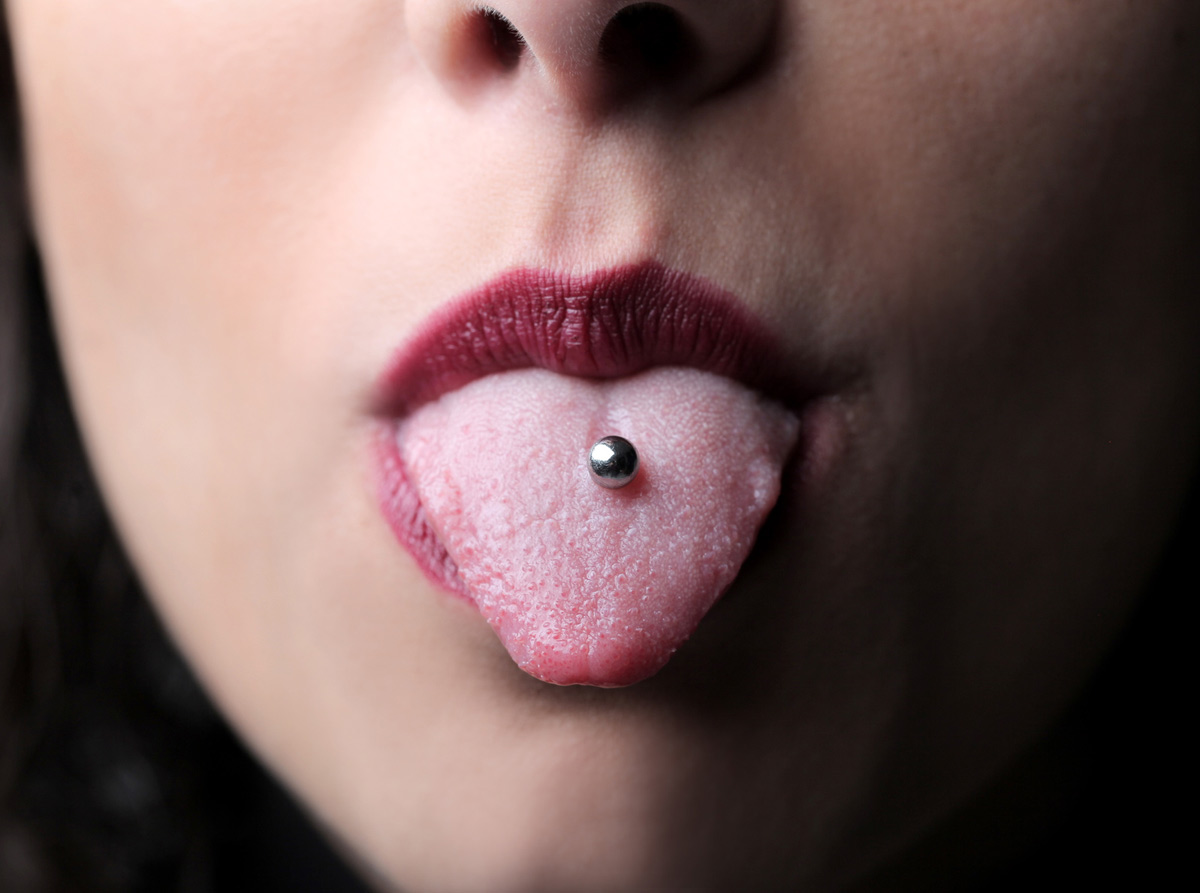
Ever wondered what's behind the trend of tongue piercings? Well, you're in for a treat! Tongue piercings, often seen as a bold fashion statement, carry a rich tapestry of facts that might just surprise you. From their historical significance to the quirky details about the healing process, there's more to this body modification than meets the eye. Did you know that tongue piercings have been around for centuries, serving various cultural and spiritual purposes? Yes, that's right! Today, they're not only a symbol of individuality but also a nod to ancient traditions. So, buckle up as we dive into the fascinating world of tongue piercings, uncovering 15 great facts that will surely pique your interest. Whether you're considering getting one or just curious about this unique form of expression, these tidbits will give you plenty to chew on.
Key Takeaways:
- Tongue piercings are a popular form of self-expression and aesthetic appeal, but they come with risks like infections and damage to teeth and gums. Proper aftercare and choosing the right jewelry are crucial for a smooth healing process.
- Tongue piercings have cultural significance and have evolved over time, reflecting broader shifts in societal attitudes towards body modification. Modern trends include LED and vibrating tongue rings, showcasing the influence of technology on this form of self-expression.
What is a Tongue Piercing?
Tongue piercing involves creating a hole through the tongue to insert jewelry. This form of body modification has been practiced for centuries, with various cultures adopting it for different reasons, from spiritual and ritualistic purposes to aesthetic and personal expression in modern times.
Why Do People Get Tongue Piercings?
Individuals opt for tongue piercings for numerous reasons. Some see it as a form of self-expression, a way to stand out or belong to a group. Others might find it appealing for its aesthetic value or as a means of enhancing sensual pleasure. Regardless of the reason, tongue piercings have become a popular choice among various age groups and cultures.
- Self-expression is one of the primary reasons people choose to get a tongue piercing.
- Aesthetic appeal: Many find the look of tongue jewelry to be attractive.
- Enhancing sensual pleasure is another reason cited by those who have undergone this piercing.
How is a Tongue Piercing Done?
A professional piercer performs tongue piercings in a clean, safe environment. The process involves marking the spot on the tongue where the piercing will go, followed by the use of a needle to create the hole. After the piercing is made, jewelry is inserted through the hole.
- The process typically involves the use of a clamped technique to hold the tongue in place.
- Healing time for a tongue piercing can vary, generally taking between 4 to 6 weeks.
Risks Associated with Tongue Piercings
Like any form of body modification, tongue piercings come with potential risks. These include infections, prolonged bleeding, damage to teeth and gums, and difficulties with speech and eating.
- Infections can occur if the piercing is not properly cared for.
- Damage to teeth and gums can result from the jewelry rubbing against them.
- Swelling of the tongue is a common side effect immediately following the piercing.
Aftercare for Tongue Piercings
Proper aftercare is crucial to ensure the healing process goes smoothly and to reduce the risk of complications. This includes regular cleaning, avoiding certain foods and activities, and monitoring for signs of infection.
- Cleaning the piercing with a saline solution is recommended to aid in healing.
- Avoiding spicy and hot foods can help minimize discomfort and swelling.
Choosing the Right Jewelry
Selecting the appropriate jewelry for your tongue piercing is important not only for aesthetic reasons but also to avoid potential health risks. Materials such as surgical steel, titanium, and biocompatible plastics are recommended due to their lower risk of causing allergic reactions or infections.
- Surgical steel and titanium are popular choices for initial piercings.
- Jewelry size and style should be chosen carefully to avoid complications.
The Cultural Significance of Tongue Piercings
Tongue piercings have held various meanings and significance across different cultures throughout history. In some societies, they were seen as a rite of passage, while in others, they were believed to offer spiritual benefits or protection.
- In ancient Aztec and Maya cultures, tongue piercings were conducted as part of spiritual rituals.
- Modern-day tongue piercings often symbolize rebellion or individuality.
The Evolution of Tongue Piercing Trends
Tongue piercing trends have evolved significantly over the years. From the types of jewelry used to the reasons behind getting pierced, changes reflect broader shifts in societal attitudes towards body modification.
- LED and vibrating tongue rings are examples of how technology has influenced tongue piercing trends.
A Final Nod to Tongue Piercing Intricacies
Tongue piercings, a form of self-expression that dates back centuries, continue to fascinate and intrigue. From the initial decision, navigating aftercare, to understanding the cultural significance, there's a lot packed into the choice of getting one. Remember, healing times vary and diligent aftercare is crucial for avoiding infections. Also, considering the potential risks and consulting with professionals can't be overstressed. This body modification isn't just about fashion or rebellion; it's deeply personal and, for some, a spiritual journey. Whether you're pondering the idea or simply curious about the practice, these facts shed light on the complexity and allure of tongue piercings. They're not just a statement but a story, a piece of history carried in the very fabric of our modern identity. So, here's to the bold, the curious, and the history keepers of body art.
Frequently Asked Questions
Was this page helpful?
Our commitment to delivering trustworthy and engaging content is at the heart of what we do. Each fact on our site is contributed by real users like you, bringing a wealth of diverse insights and information. To ensure the highest standards of accuracy and reliability, our dedicated editors meticulously review each submission. This process guarantees that the facts we share are not only fascinating but also credible. Trust in our commitment to quality and authenticity as you explore and learn with us.


